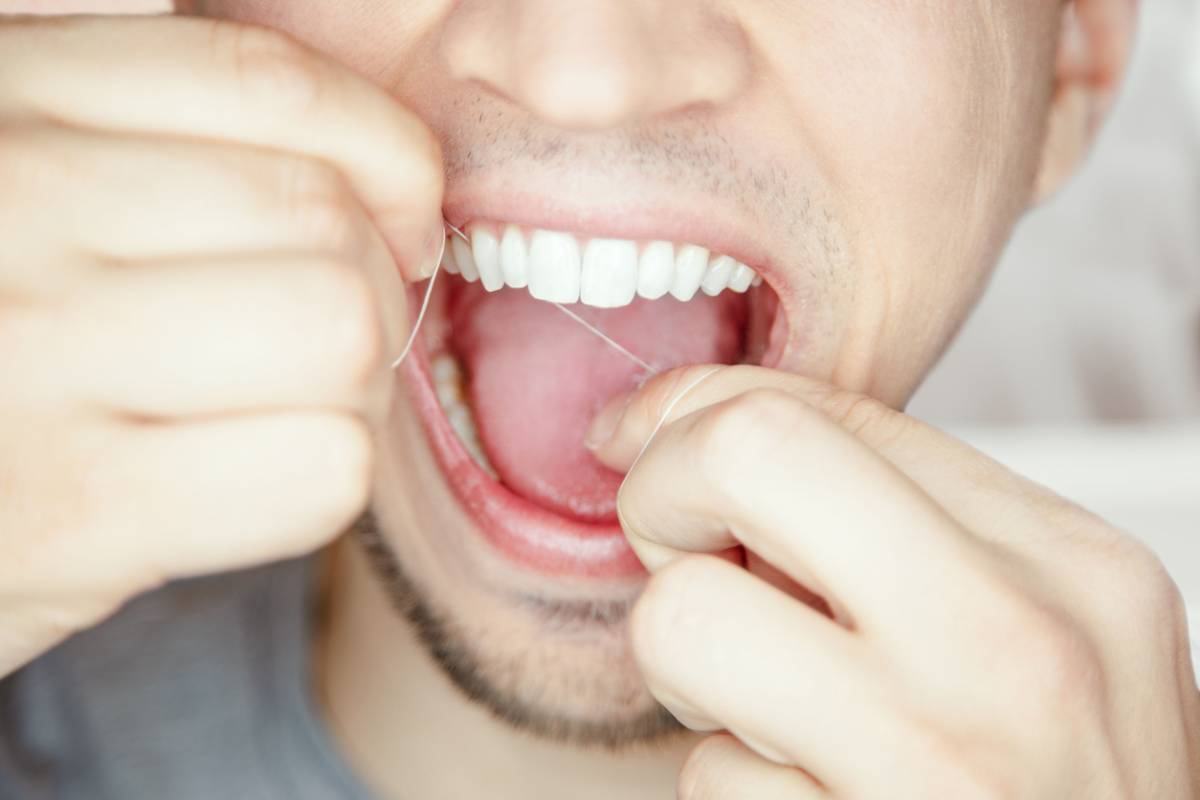Porcelain veneers can completely transform and revitalize a patient’s smile. Nevertheless, veneers still need to be maintained with daily oral hygiene practices. Brushing and flossing are the foundation of any good at-home dental care routine. But can you floss with veneers? We share the answer to this question and more below.
Can You Floss With Veneers?
The quick answer to this question is, yes, you can floss with dental veneers. Whether or not you have veneers, daily flossing remains an integral part of your oral health routine. Your oral health will influence how long your veneers last, so anything you do to keep your teeth and mouth free of bacterial buildup will not only help your oral health but also contribute to the longevity of your veneers.
Flossing With Veneers: Dispelling Myths
1. Flossing Will Dislodge Veneers from Your Teeth
Flossing with veneers will not cause them to come off your teeth. The solution used to bond the veneers to your tooth is extremely durable. The simple mechanical motion of flossing is not enough to cause any noticeable shift in the veneer.
2. Floss Will Not Fit Between The Veneers
You absolutely should be able to slide floss between teeth that both have veneers. If you cannot, it likely means your dentist did not place them properly, or the veneers were improperly made. Just like your normal teeth, veneer-covered teeth should rest against each other. But if they press together so much that even floss cannot slide between them, visit your dentist to discuss how to proceed.
3. You Do Not Need to Floss With Veneers Because Your Teeth Are Fully Covered
While veneers do protect the tooth under them, they do not cover the entire tooth’s surface. You will still have plenty of natural tooth material that needs protection from bacterial buildup. Stop that buildup in its tracks with daily flossing.
How Do I Floss With Veneers?
Flossing with veneers is virtually the same as flossing without veneers. However, below, we break down a few key factors to keep in mind.
Gentler Works Best
Aggressive flossing will do you no favors. In fact, using too much force when flossing risks irritating your gums and causing bleeding. The food debris between your teeth will not put up a fight, so a gentle gliding motion will be sufficient. Guide the floss along the space between your teeth right up to the gum line.
Implement the C-Shape Technique
The area where the veneer transitions to natural tooth material needs some extra care. Since your tooth and the veneer are different materials, they can wear down at different rates. This often can lead to an uneven part where bacteria can build up. You can help prevent this by making a C shape around the side of the veneer, getting more surface contact with the floss and the tooth.
Use Waxed Floss
Wax-coated floss slides more easily between teeth than non-wax floss. This can further reduce any risk of the floss catching on parts of your tooth or veneer. Non-waxed floss can still work, but patients may have a harder time sliding it between some teeth. Waxed floss has additional benefits, including:
- Softer on the gums
- Harder to break
- Less likely to fray
Floss at Least Once a Day
The American Dental Association recommends flossing at least once per day. Flossing twice can often prove even better. But the quality can count more than the quantity. Having a single, high-quality flossing session can serve you better than two or more lower-quality sessions. Take the time to fully clear out food debris, and your dental veneers will thank you.
Bonus Tip: Try Interdental Brushes or Floss Threaders
- Interdental Brushes: This unique type of brush is designed to better clean between one’s teeth. We often recommend them to any patients at risk for gum disease. Some patients with veneers find them an easier alternative to flossing when caring for their veneer-covered teeth.
- Floss Threaders: A floss threader helps patients get floss through their teeth. We usually recommend these for patients with braces or other dental devices. However, some patients with veneers might find them helpful in caring for their treated teeth.
Always Listen to Your Dentist First
When receiving dental veneers, your dentist will provide you with personalized instructions. In most cases, you can floss with veneers exactly as we described in this article. However, some special situations can exist. If your dentist provides any additional guidance on how to floss with your veneers, we recommend paying close attention. Their goal is always to keep your oral health at its best.
A Leader In Dental Veneers
Valley Alder Family Dentistry has been a top dentist for patients of all ages for years. We provide custom porcelain veneers and provide full patient support throughout the process. Call our office to learn more.


